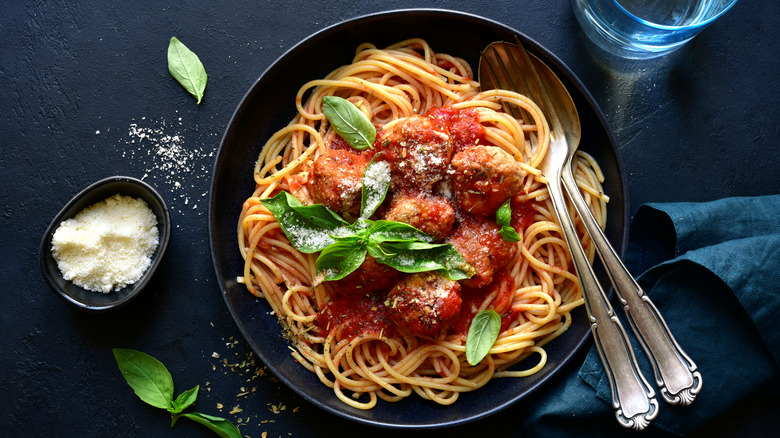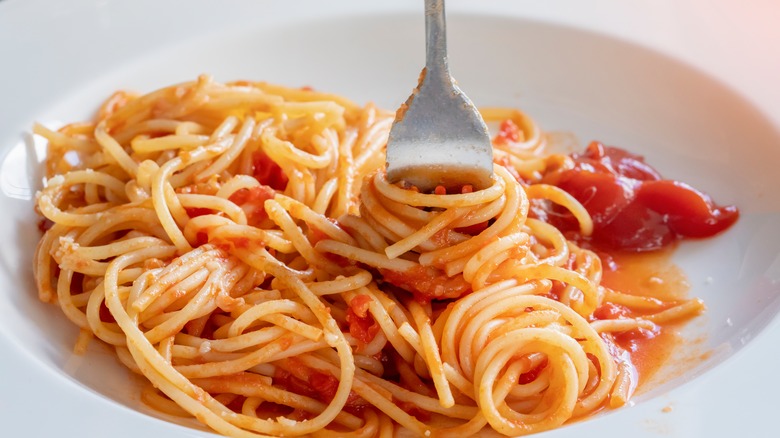The Ancient And Debated Origin Of Spaghetti
At first glance, the history of spaghetti appears to be rooted in Italy. After all, dishes such as spaghetti carbonara and spaghetti al olio are time-honored staples of Italian cuisine featured on countless menus at numerous trattorias and Italian-themed restaurants. In the public imagination, spaghetti is as characteristically Italian as pizza, gelato, and wine bottles wrapped in straw baskets.
But did you know there are some who believe that spaghetti actually originated in China? The theory is, as Today relates, that Italian adventurer Marco Polo brought back noodles from China after his travels there in the 13th century. These noodles have been proposed as the likely progenitors of pasta — and spaghetti specifically — based on the latter's noodle-like appearance. Marco Polo, when writing of his travels, even refers to a number of Chinese dishes that seem to resemble pasta, notes PBS.
This theory has a reasonable plausibility based on how many things were actually invented in China. Did you know, for example, that paper, the printing press, gunpowder, tea, liquor, and the abacus are all thought to have originated in China? It's true, observes Interesting Engineering, as is the remarkable fact that the Chinese have been enjoying noodles for at least 4,000 years. The evidence to support this was uncovered in 2005 in northwestern China, according to The New York Times, when a bowl of noodles dating back four millennia was excavated by scientists.
The country where spaghetti really originated
But is the theory true that spaghetti originated in China? The answer is no. As Today explains, the earliest evidence of pasta is actually found in Ancient Greece. The Greeks were the inventors of a dish called laganon (that would later be known as lasagna), which involved cutting strips from pasta sheets. The first written references of laganon date between 1,000 and 800 B.C.E.
Pasta made its way to Italy after the Ancient Romans conquered the Greeks in 146 B.C.E., notes Italian Garden. As for the development of spaghetti, Marco Polo wasn't the only notable traveler during the Middle Ages. According to Best of Sicily Magazine, an Arabian chronicler named Abu Abdullah Mohammed al Edrisi, an acknowledged expert in the geography of the Mediterranean, was tasked with mapping Sicily and its environs sometime around 1139. The book he created was named for Sicily's king, and is now known in English as "The Book of Roger."
Published 100 years before Marco Polo's birth, "The Book of Roger" is now known less for its maps than for its scientific observations and cultural history. For instance, per Best of Sicily Magazine, spaghetti's origins are traced to the small Sicilian town of Trabia, whose residents were not only making and eating the distinctively long and thin pasta variant as of the year 1154, but were also selling it far and wide. This means that, yes, spaghetti's roots are likely found in Italy.

